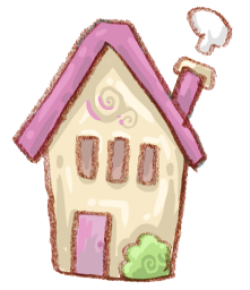One of the very last items I bought for my childhood dollhouse was a working fireplace but unfortunately it was never actually used. The wires for the light didn’t arrive with a plug on the end and at the age of 10 this was a complete no go… I was planning on figuring it out this time around, although 12 years later I was still as clueless with this sort of thing. Luckily, I stumbled upon this image whilst browsing through websites for outside lanterns! I wish information like this was sent with the items and not assumed as a given fact but oh well!

(Image from: http://www.dollshouseparade.net)
Sure enough it is literally a case of removing the pins, inserting the wire and replacing them. It finally works!

I have taken this success as a sign that I am now a fantastically talented electrician and therefore am intending to jump from this to converting an old broken chandelier into 3 jar lights which I have seen elsewhere and love. A big jump to say the least! *Fingers crossed*
I started by dismantling the original chandelier which consisted of 5 individual metal arms which all connected up at the base. I sacrificed the first arm in an attempt to work out how the new lights would need to be wired in order to work and not cause a fire! The second sadly broke when I tried to remove the outer metal casing. Thankfully the final 3 removals were a success! It would have been ideal to leave behind the wire casing on all 3 but this was not essential (I hope). I bet you can guess which one I did last anyway, practice does make perfect!

Next I needed to find some jars which I didnt mind sacrificing to make the casing around the the bulbs. I used 3 kitchen jars from my old dollhouse. As I have yet to install a kitchen in this house I figured it wouldn’t be too much of a problem…for now anyway!


Now comes the tricky bit!
It would have been easier to wire the 3 lights seperately with 3 seperate plugs, however given that my house has 10 rooms which will all (eventually) have lighting, this wouldn’t be practical. Therefore, I decided to connect them all together in a triangle formation with one wire connecting them to the ceiling. One wire would be required to connect together the wires leaving each blub and a seperate wire used to connect the base of each light together. Let the soldering commence!

Ta-dah! It works!

Now it was necessary to ensure that the two sets of wires never meet, the reason why keeping the original wire casing on would have been advantagous! I used a sealant glue to cover the wires leaving the bulbs, protecting them from the wire above.

Finally I glued the jars into place and waited for them to dry.


Now all that’s left to do is cover the wires and install the finished light!





































